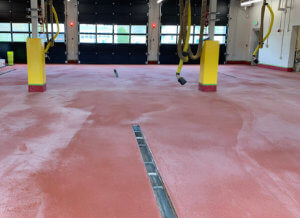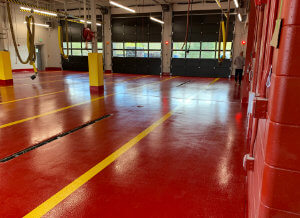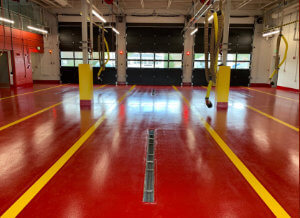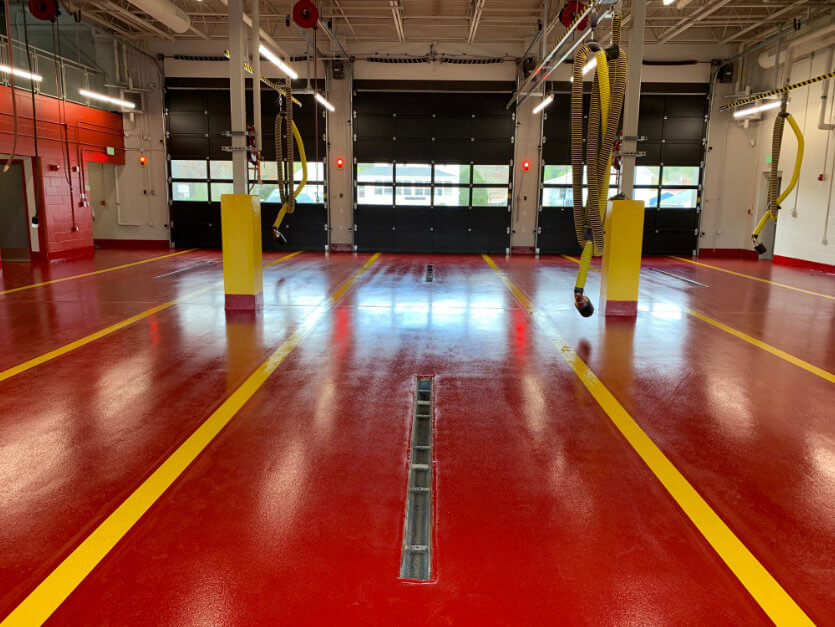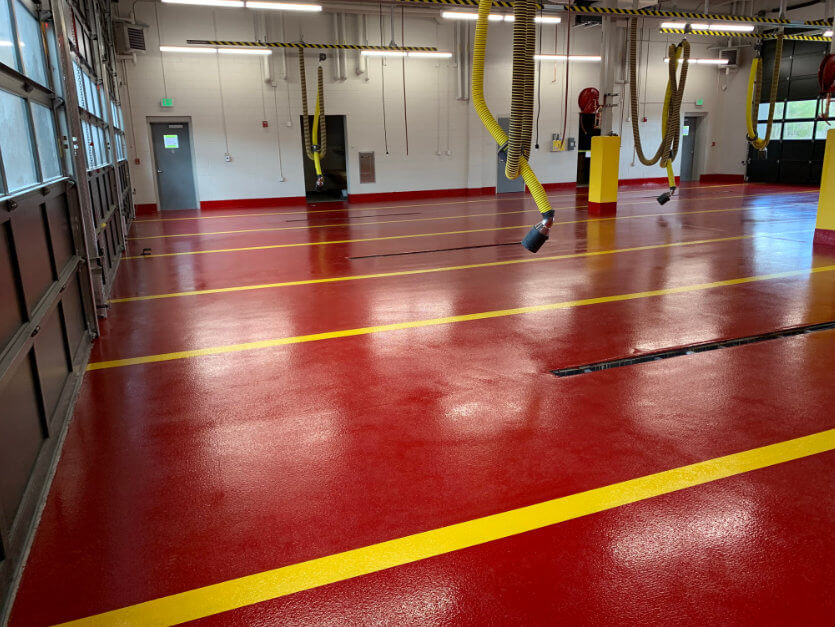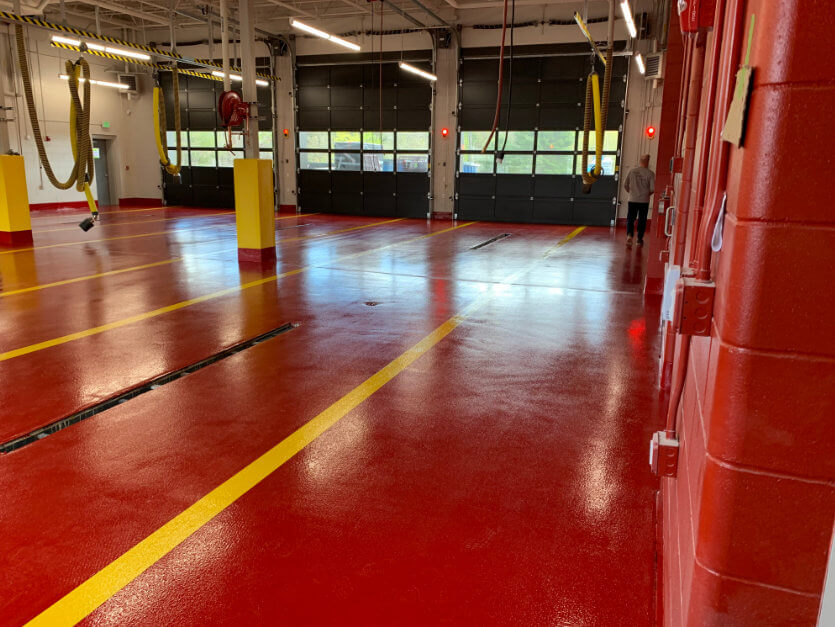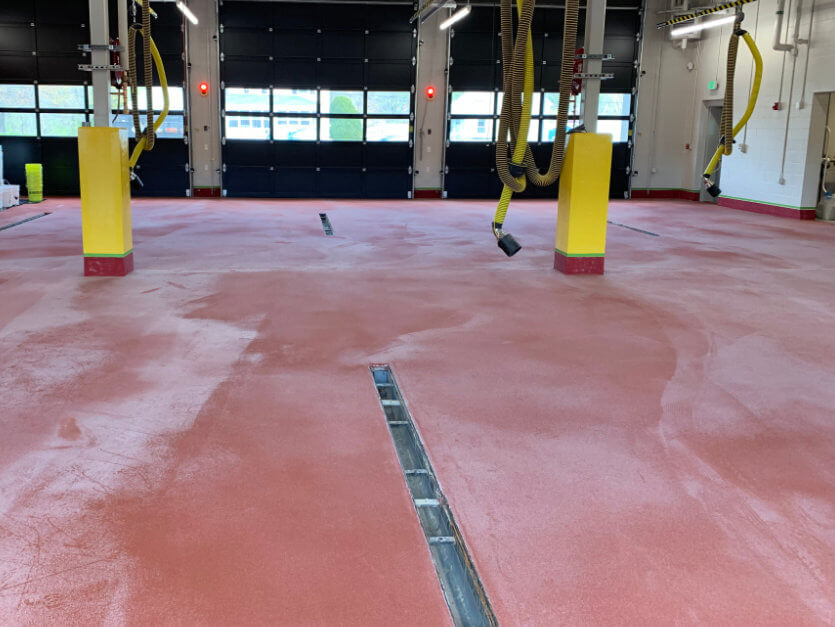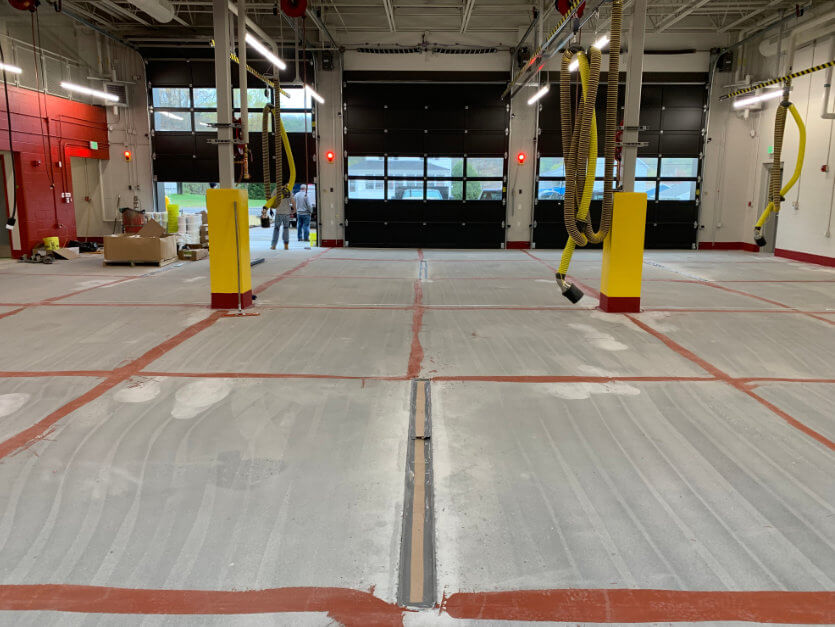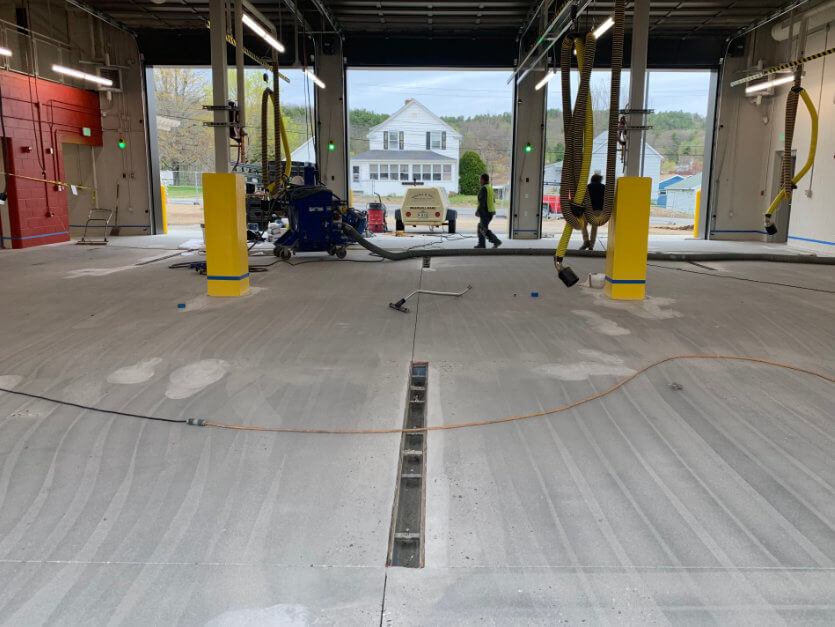Lewiston Fire Station Gets Fire Red Floor with Yellow Striping
Resinous Flooring
About Lewiston Fire Department
Location: Lewiston, Maine
The Lewiston Fire Department dates all the way back to the 1800s with its first station on Chapel Street in 1849. Before 1849, records show there were no firefighters, rather “fire wards” in the village.
During this era, there were no recorded descriptions or methods of firefighting. It is assumed that attempts to fight fire included sounding off an alarm by shouting “fire” and ringing church bells and calling all able-bodied men to the site of the blaze.
Often volunteer efforts were too vulnerable and unreliable to provide protection to the growing community and were eventually deemed ineffective. This led to the formation of the Lewiston Falls Village Corporation, a committee driven to maintain a good and efficient fire department within the limits of the corporation.
The Corporation was then authorized by state legislature to raise money for the purchase and maintenance of fire equipment, to erect and maintain engine houses and to construct reservoirs/aqueducts for readily available water supplies.
On October 30, 1849, the very first engine house in Lewiston opened its doors – Engine Company Androscoggin #1. It was stationed on Chapel Street with 57 members. Over the decades more station houses were erected, and the Lewiston Fire Department battled major fires and saved countless lives.
The Hascall & Hall team began by applying a base coat and broadcast aggregate into the wet material.
